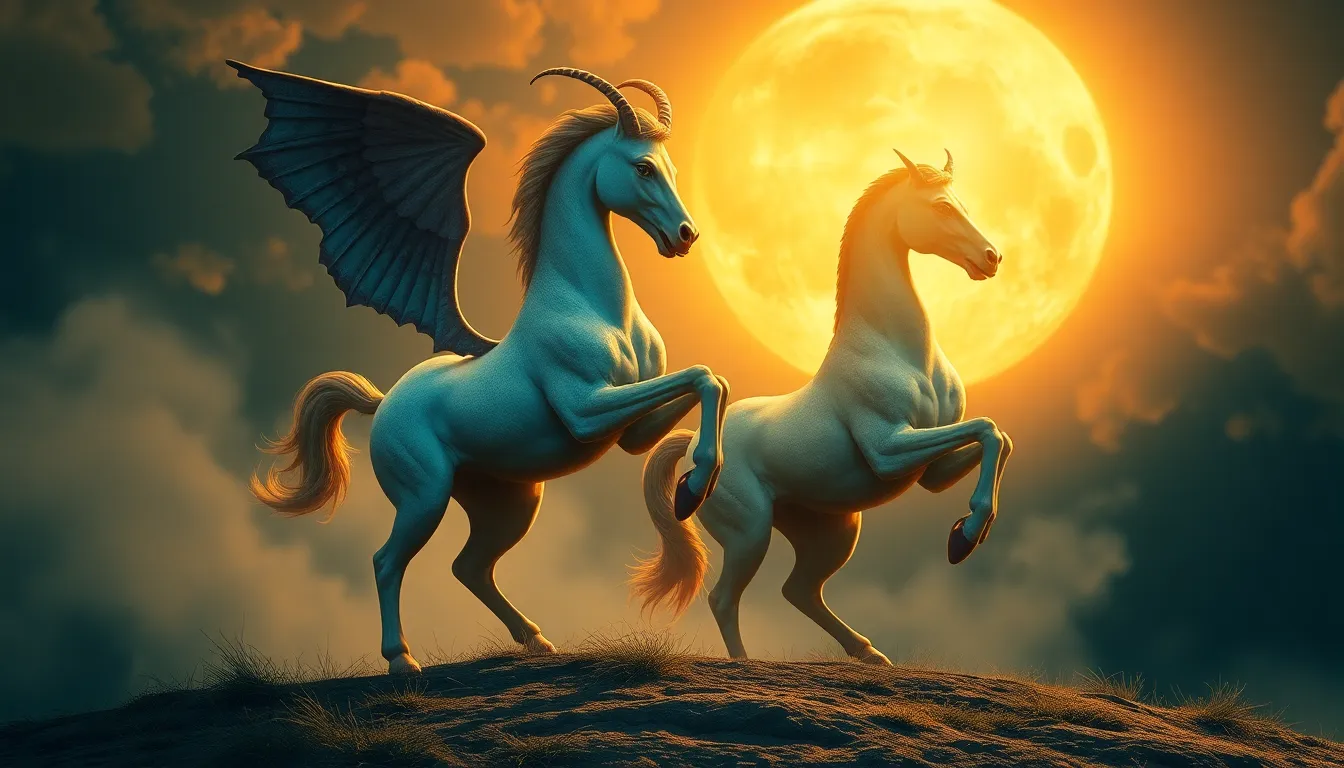The Duality of Centaurs: Exploring Their Inner Struggles
I. Introduction
In Greek mythology, centaurs are fascinating creatures that embody the duality of human and animal. With the upper body of a human and the lower body of a horse, they symbolize the constant struggle between civilization and primal instincts. This article aims to explore the inner struggles of centaurs, examining their complex identities and the implications of their dual nature.
II. The Mythological Background of Centaurs
The origins of centaurs can be traced back to ancient Greek mythology, where they are often depicted as wild and unruly beings living on the fringes of society. They are believed to have descended from Ixion, the king of the Lapiths, and clouds created by Zeus. This lineage contributes to their representation as both noble and barbaric.
Centaurs are characterized by their unique physical form, which serves as a powerful symbol of the conflict between humanity and the animalistic traits they embody. Notable figures among centaurs include:
- Chiron: Known for his wisdom and healing abilities, Chiron stands out from other centaurs due to his civilized nature.
- Pholus: Another notable centaur, often associated with hospitality and tragedy, illustrating the complexities within centaur society.
III. The Human-Horse Dichotomy
The physical representation of centaurs as half-human and half-horse is a powerful metaphor for the duality of their existence. This dichotomy leads to a significant conflict between the civilized aspects of their human nature and the primal instincts of their equine form.
The struggle manifests in various ways:
- Civilization vs. Primal Instinct: Centaurs often face challenges in balancing their rational human thinking with their animalistic urges.
- Psychological Implications: The identity crisis stemming from being half-human and half-animal leads to feelings of alienation and confusion regarding their place in the world.
IV. Centaurs in Literature and Art
Centaurs have been depicted in numerous forms of classical literature. In works by authors like Homer and Ovid, they are often portrayed as wild and unruly, emphasizing their connection to nature and the chaos it represents.
Modern interpretations in literature and film have redefined centaurs, showcasing their struggles for acceptance and understanding in a world that often views them as monsters.
Artistic representations, ranging from ancient sculptures to contemporary paintings, often reflect the complexities of centaur symbolism, illustrating their dual nature through various stylistic choices. They serve as a reminder of the thin line between civilization and chaos.
V. The Struggle for Identity
Central to the narrative of centaurs is the theme of identity and belonging. The duality of their existence often leads to feelings of alienation, as they struggle to find their place in both human society and the wild.
The quest for self-acceptance among centaurs mirrors human experiences of identity struggles:
- Belonging: Many centaurs, like Chiron, seek to bridge the gap between their two worlds, yearning for acceptance.
- Alienation: The wild nature of some centaurs, such as the Lapiths, highlights the internal conflict and rejection they face from civilized society.
VI. Centaurs as Symbols of Conflict
Centaurs represent not only individual internal conflicts but also broader societal struggles. Their existence is a metaphor for the human condition, addressing the conflicts between our civilized selves and our more primal instincts.
Case studies of specific centaur characters exemplify these themes:
- Chiron: Embodies the struggle for wisdom and morality amidst chaos, serving as a mentor to heroes while grappling with his own identity.
- Pholus: Represents the tragic consequences of being caught between two worlds, highlighting the dangers of excess and the loss of control.
VII. The Resolution of Duality
The journey of centaurs often leads to potential paths for reconciliation of their dual nature. Through various narratives, centaurs learn valuable lessons about acceptance and integration.
The impact of embracing their complexity is significant:
- Self-Acceptance: Characters like Chiron highlight the importance of accepting one’s dual nature as a source of strength rather than a weakness.
- Integration: The resolution of their struggles often leads to a deeper understanding of their identity and place in the world.
VIII. Conclusion
The inner struggles of centaurs encapsulate the complexities of duality in identity. Their journey reflects the human experience, reminding us of the challenges we face in reconciling different aspects of ourselves.
As we reflect on the symbolism of centaurs today, we recognize the relevance of their stories in addressing our contemporary struggles with identity and belonging. Embracing our complexities can lead to greater understanding and acceptance, both of ourselves and those around us.




